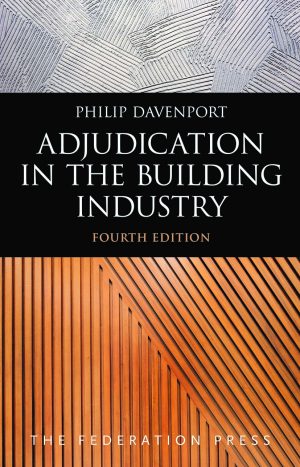Adjudication in the Building Industry should be compulsory reading for students of architecture, engineering, building and construction management, and accountants whose clients carry out or commission building or engineering work. Prompt payment has always been a problem in the building and construction industry. To address the problem, starting with NSW in 2000 and ending with Western Australia in 2021 every State and the ACT have enacted a Security of Payment Act. Radical legislative changes, particularly in NSW and Queensland, and recent High Court decisions have made previous texts on Security of Payment and Adjudication, including the 3rd edition of this book, outdated.
Construction Claims is for parties to building or construction contracts, their consultants and lawyers and all who are interested in or studying construction law. It covers statutory compulsory rapid adjudication, which has now spread to all States, the Northern Territory and the ACT.
Adjudication in the Building Industry
1. Introduction
2. Significant changes
3. How to make a payment claim
4. How to make a payment schedule
5. Consequences of failure to make a payment schedule
6. How to make an adjudication application
7. How to make an adjudication response
8. How to withdraw an adjudication application
9. Appointment of adjudicator
10. How to make an adjudication determination
11. After adjudication
12. How to file an adjudication certificate as a judgment
13. Queensland
14. South Australia
15. Tasmania
16. Victoria
17. Western Australia
18. ACT
19. Glossary
20. Precedents
Construction Claims
Introduction
1. Why categorise claims and remedies
2. Legal categories of claim
3. Categorising remedies
4. Variation claims
5. Interest
6. Time-related claims
7. Quantum meruit claims
8. Claims after termination by frustration
9. Defective work claims
10. Licensing and building claims
11. Defences
12. Claims after termination
13. The penalty doctrine
14. The deemed trust
Glossary of terms
Index








